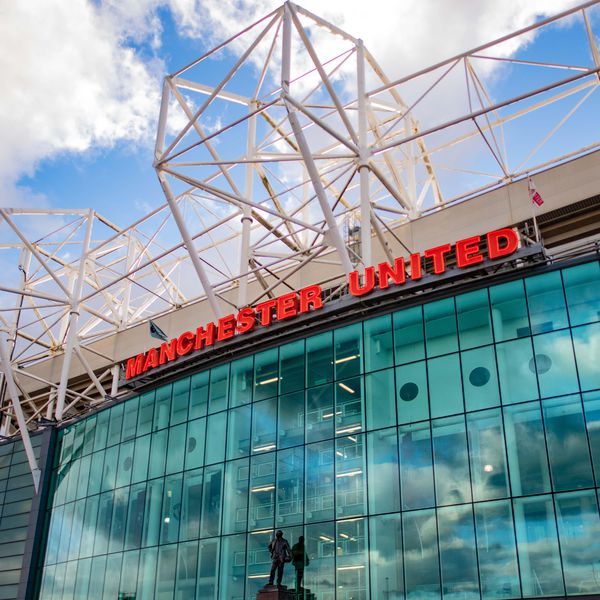Real Betis: Our next opponents' story so far
Manchester United are set to meet Spanish club Real Betis for the first time ever in a competitive fixture on Thursday.
The La Liga side are the visitors to Old Trafford for our Europa League last-16 first-leg tie (20:00 GMT), before the return match at Los Verdiblancos’ Benito Villamarin Stadium seven days later.
Before then, United Review, our official matchday programme, has delved into the history books as we become more familiar with our upcoming opponents’ 115-year story so far…
How to watch and follow United v Real Betis
ArticleOur match preview contains essential information about TV coverage, team news, form guides and more.
Los Verdiblancos’ eternal city-rivals Sevilla may be older, have had more success and earn more international notoriety, but Betis revel in their role as sweat-soaked artisans to their bourgeois neighbours.
Their popularity extends across Spain in a way few teams that aren’t Real Madrid and Barcelona can match, brought about by working-class emigration from the Andalusia region in the 1950s and 1960s, as thousands set off in search of employment.
As a result, there are more Betis peñas (supporters’ clubs) in northern province Catalonia than there are for Barcelona-based Espanyol.
WORKING-CLASS FOUNDATIONS
Betis’ working-class association dates to 1909 when three Sevilla directors refused to sanction the signing of a player from Triana, a blue-collar neighbourhood of the city known both for its left-wing outlook and as the birthplace of flamenco.
Two furious dissident directors upped sticks and formed their own club, Betis, named after the Roman word for the city’s Guadalquivir river, Baetica. In 1914, Betis merged with Sevilla Balompie (formed seven years earlier) to form Real Betis Balompie.
A UNIQUE LINK WITH UNITED
The club won their first (and only) La Liga in 1935 under the guidance of Irish coach Patrick O’Connell, a former Manchester United captain and future Barcelona manager.
Yet, typical of Betis’s luck, the Spanish Civil War soon raged. Many players fled to exile or died fighting for the Republican cause against General Franco’s fascist forces. Relegated to the third tier by 1946, Betis retained their spirit, if not their best players. Local lad Luis del Sol joined Real Madrid in 1959 after helping Betis restore their top-flight status and won the following year’s European Cup with Los Blancos.
400 games and counting...
ArticleThe best stats from our European history so far, as we look ahead to match no.401 against Real Betis.
After beating Athletic Bilbao in the 1977 Copa del Rey final on penalties, Betis beat Italian giants AC Milan en route to the following season’s Cup Winners’ Cup quarter-finals before returning to mid-table obscurity, punctuated by the occasional season in the second tier for the next two decades.
It took the return of coach Serra Ferrer in 2004 for an uptick with a fourth-placed La Liga finish and a second Copa del Rey triumph.
THE PRESENT: PELLEGRINI’S ERA
Manchester City's 2013/14 Premier League-winning boss has developed a possession-hungry side intent on attack that earned the club a third Copa del Rey triumph last summer, Betis beating Valencia in the final.
With the creative talents of Sergio Canales and Nabil Fekir – although the latter now out with a season-ending injury - and a superb defensive midfield screen of Guido Rodriguez and William Carvalho, it’s easy to see why Betis’s fluid 4-2-3-1 system remains in La Liga’s top six.
“Manchester United are a great team but it will also be difficult for them,” said former midfielder Trujillo, now the team’s administrator. “Betis will bring our identity and attacking philosophy to take the initiative.”
You can read the full feature on Real Betis’ history in Thursday’s edition of United Review, available at the ground on matchday, and online here.




